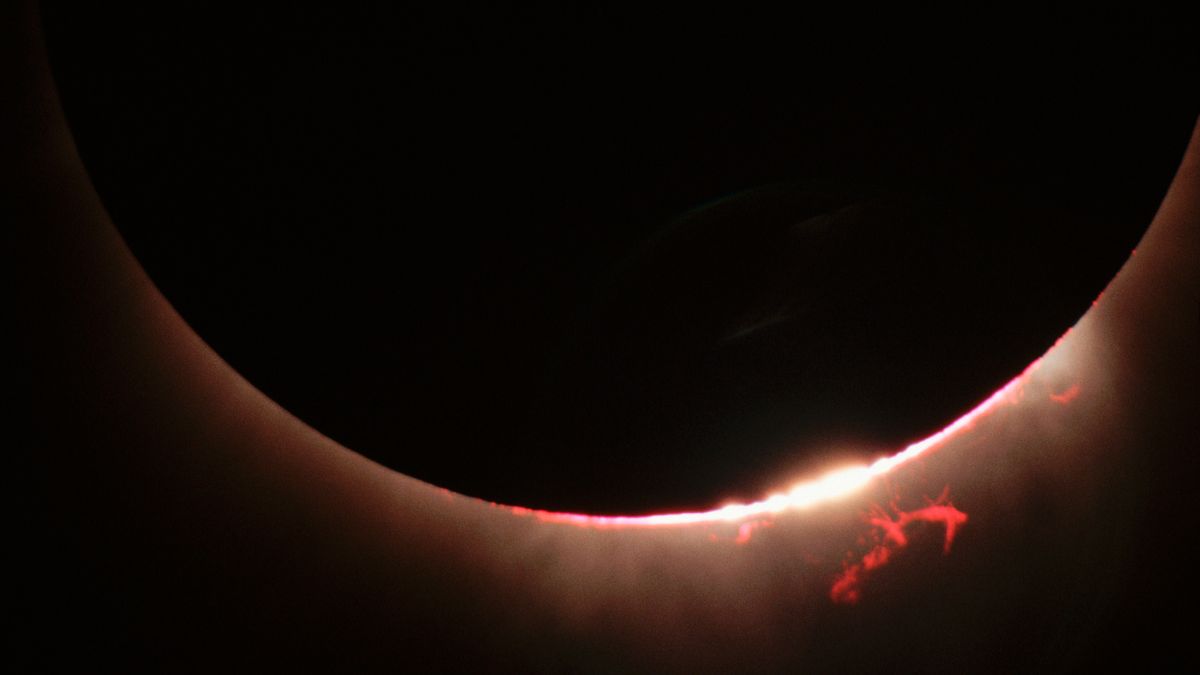The total solar eclipse gracing North America on April 8, 2024, promises to be a celestial spectacle unlike any other.
As the moon’s perfect dance conceals the sun’s fiery disk, a brief period of darkness, totality, will descend upon the path of totality. This fleeting moment offers a unique opportunity to peer into the heart of our star, unveiling the sun’s usually hidden corona, a wispy outer atmosphere teeming with solar activity. While the sight of prominences – fiery loops and towers of plasma clinging to the sun’s edge – is a guaranteed feature of totality, skywatchers might be fortunate enough to witness even more extraordinary phenomena.
Magnificent Eruptions: Unveiling the Corona’s Fury
Imagine a majestic spiral erupting from the sun’s corona, a colossal ejection of magnetized plasma twisting its way through space. This awe-inspiring sight is a coronal mass ejection (CME), a rare but not impossible visitor during totality. The current solar cycle, nearing its peak, increases the likelihood of witnessing a CME. Unlike fleeting solar flares, CMEs can appear stationary for hours, potentially gracing viewers across the entire path of totality with an unforgettable display. These behemoths can travel millions of kilometers and interact with Earth’s magnetosphere, sometimes triggering auroras and geomagnetic storms that can disrupt power grids and communication systems. Studying CMEs during totality provides crucial insights into their formation and behavior, helping us better predict their potential impact on our planet.

Chasing the Light: The Elusive Solar Flare
Solar flares, powerful bursts of radiation erupting from the sun’s surface, are more frequent visitors than CMEs. However, the window of opportunity to witness a flare during totality is narrow. Lasting only a few minutes, a flare would appear as a brilliant red loop close to the sun’s edge, easily obscured by the moon during totality. The precise timing and positioning of a flare relative to the lunar limb would be crucial for visibility from Earth. Scientists are eager to study these bursts of energy, as they can trigger solar particle storms that can damage satellites and astronauts in space. Capturing a flare during totality would provide invaluable data on their characteristics and how they interact with the corona.
The Holy Grail: Witnessing a Celestial Ballet
The most coveted sight for eclipse chasers is a giant eruptive prominence, a colossal structure untethered from the sun’s surface and gracefully dancing in the corona. Imagine a ballet of fire, a slow-motion eruption dwarfing even the most spectacular prominences. These behemoths can erupt tens of thousands of kilometers outwards, defying gravity with their intricate magnetic field structures. While prominences themselves are a guaranteed feature of totality on April 8th, a true eruptive prominence would be a sight for the history books. Recent solar activity offers a glimmer of hope, but the element of chance remains. Witnessing such an eruption during totality would not only be breathtaking but also provide scientists with a rare opportunity to study the complex interplay between the sun’s magnetic field and its plasma in unprecedented detail.
Pushing the Boundaries of Observation: Unveiling the Sun’s Secrets
The brevity of totality, typically lasting only a few minutes, poses a challenge for studying these dynamic solar phenomena. This is where Citizen Continental-America Telescopic Eclipse (CATE 2024) comes in. By strategically positioning 35 teams of citizen scientists across the path of totality, CATE 2024 aims to capture a continuous 60-minute 3D movie of the eclipsed sun. This innovative approach is akin to stitching together observations from across the continent, creating a moving picture of the corona with unprecedented detail. It’s a scientific endeavor with the potential to unveil the secrets of the sun’s corona, offering insights into previously unseen solar eruptions and their potential impact on Earth. CATE 2024 isn’t just about scientific discovery; it’s a testament to the power of collaboration, bringing together citizen scientists from all walks of life to contribute to our understanding of our closest star.
The 2024 total solar eclipse is more than just a captivating astronomical event; it’s a scientific expedition to the very heart of our star. By observing the sun’s corona during totality, we can gain valuable knowledge about its behavior and the potential impact on Earth’s magnetosphere and communication systems. So, if you find yourself under the path of totality on April 8th, don’t just be mesmerized by the celestial ballet unfolding above – be a part of scientific discovery! Become a citizen scientist with CATE 2024, or simply witness the eclipse safely and marvel at the sun’s hidden wonders.



















